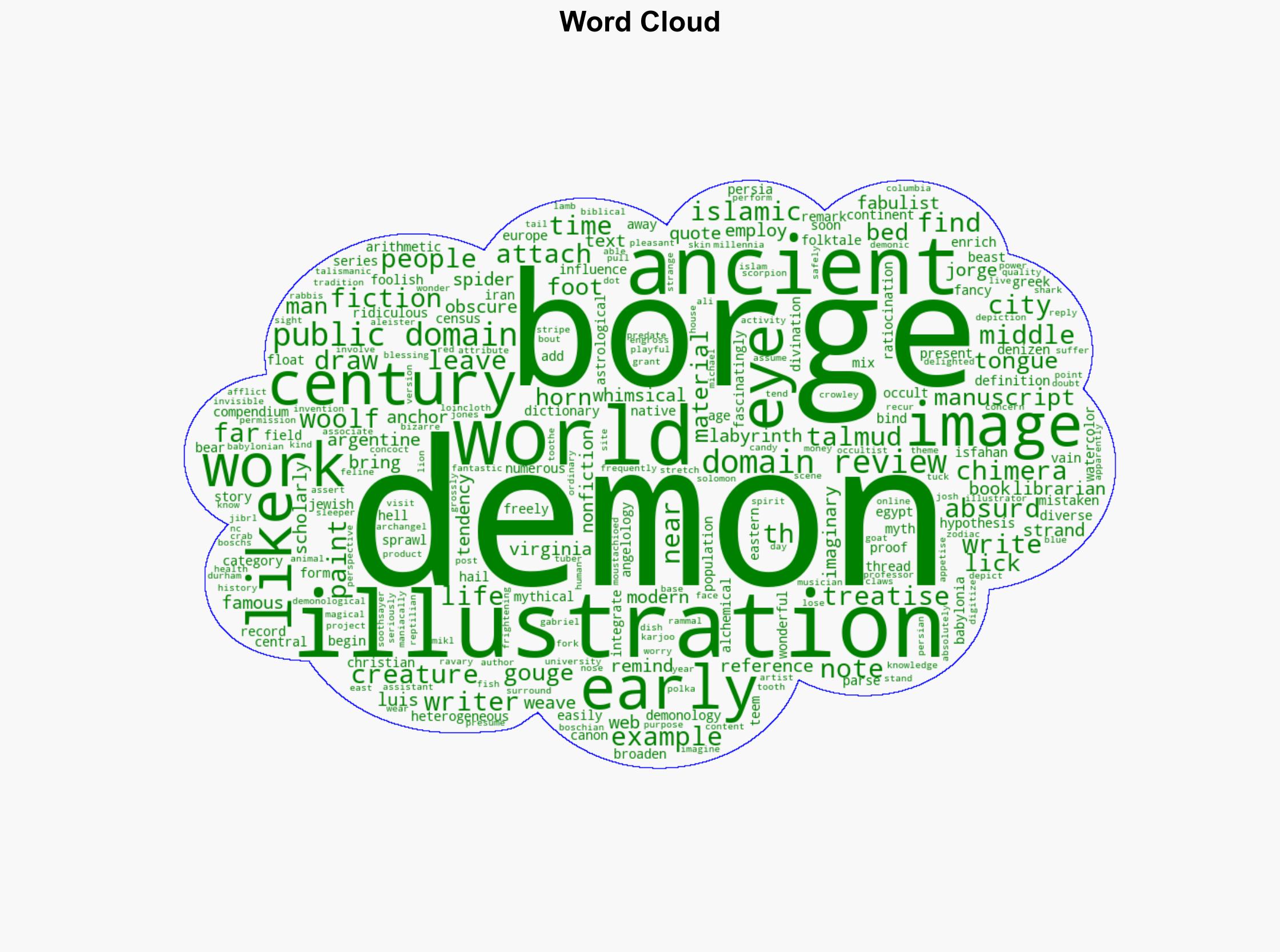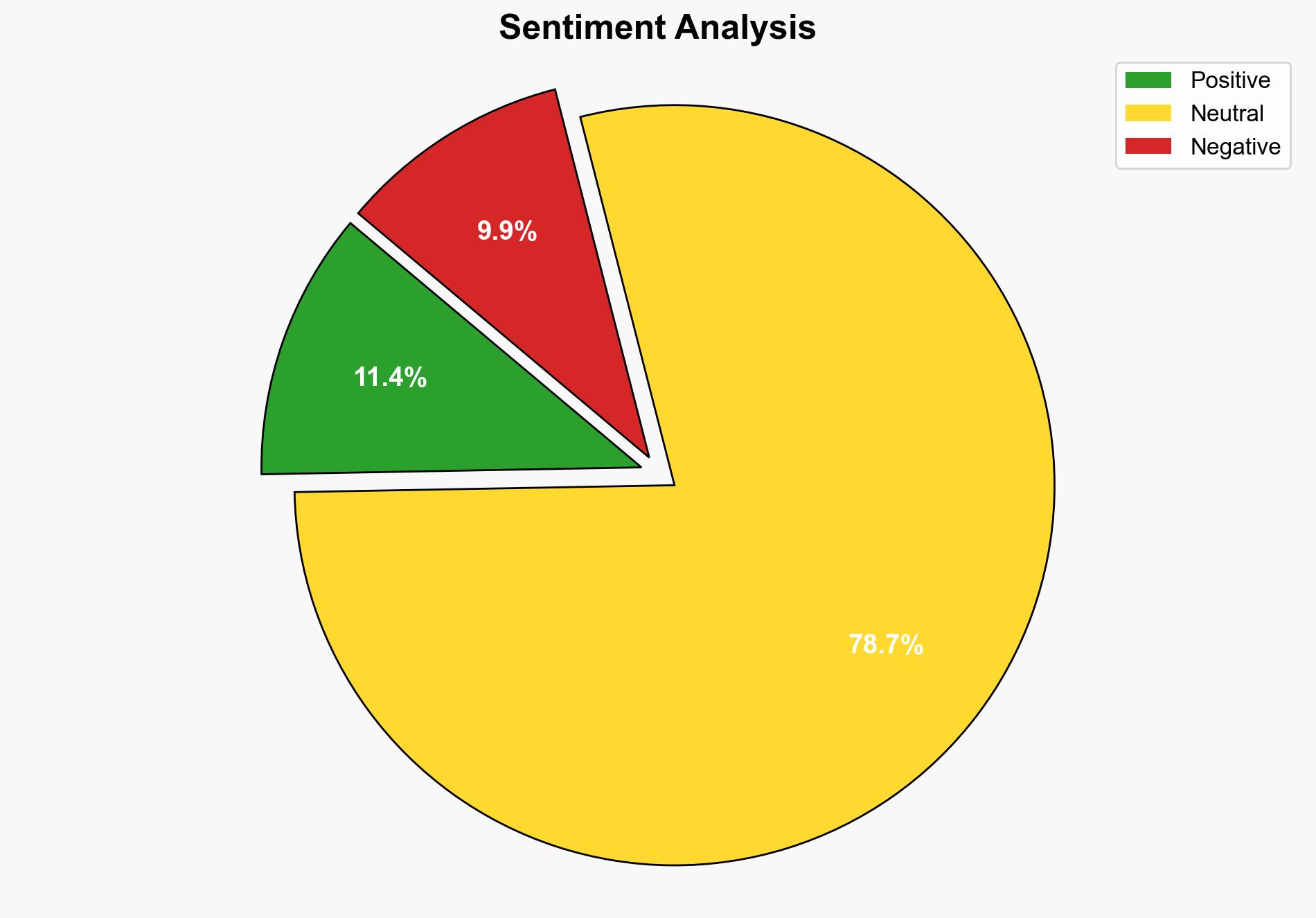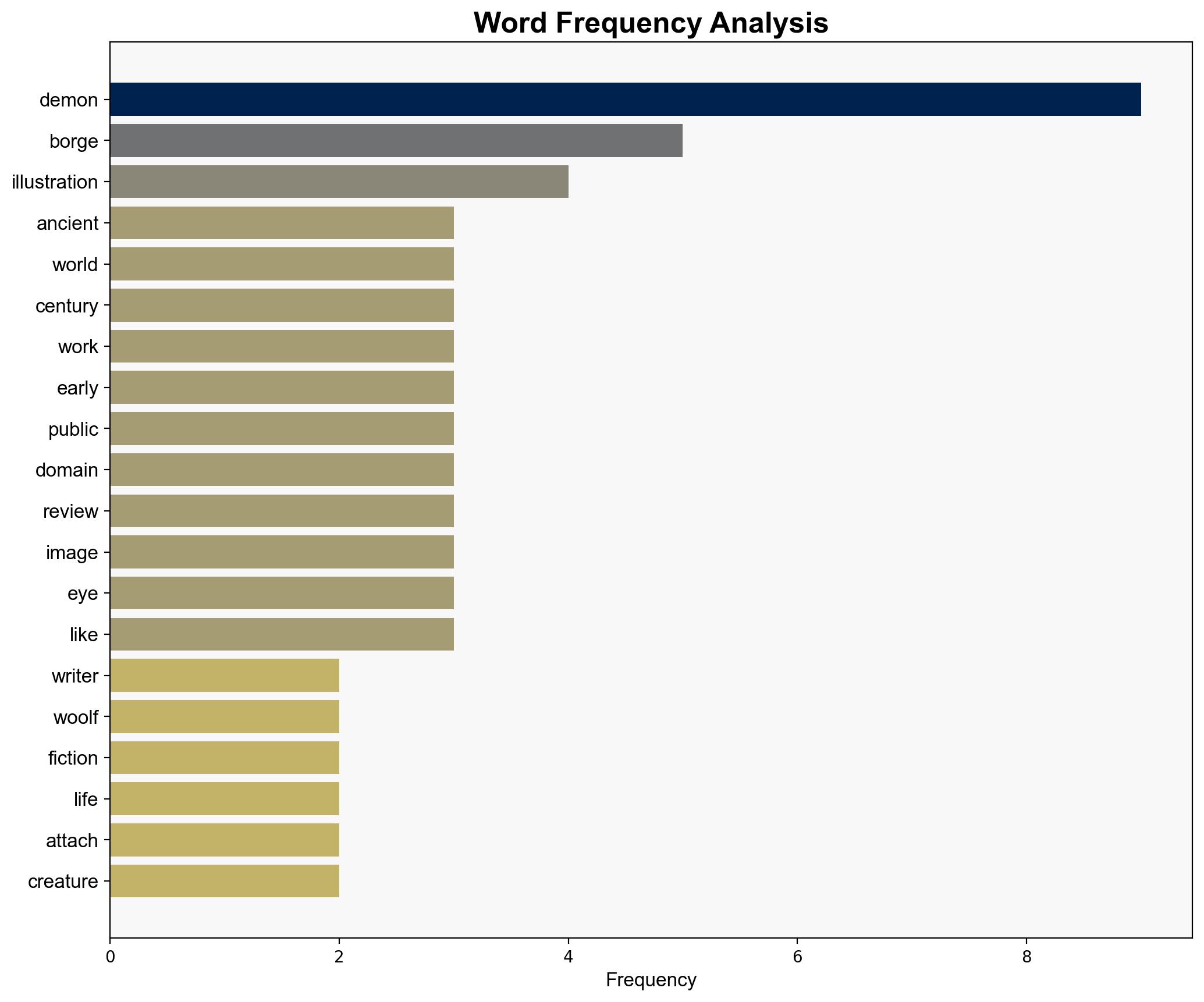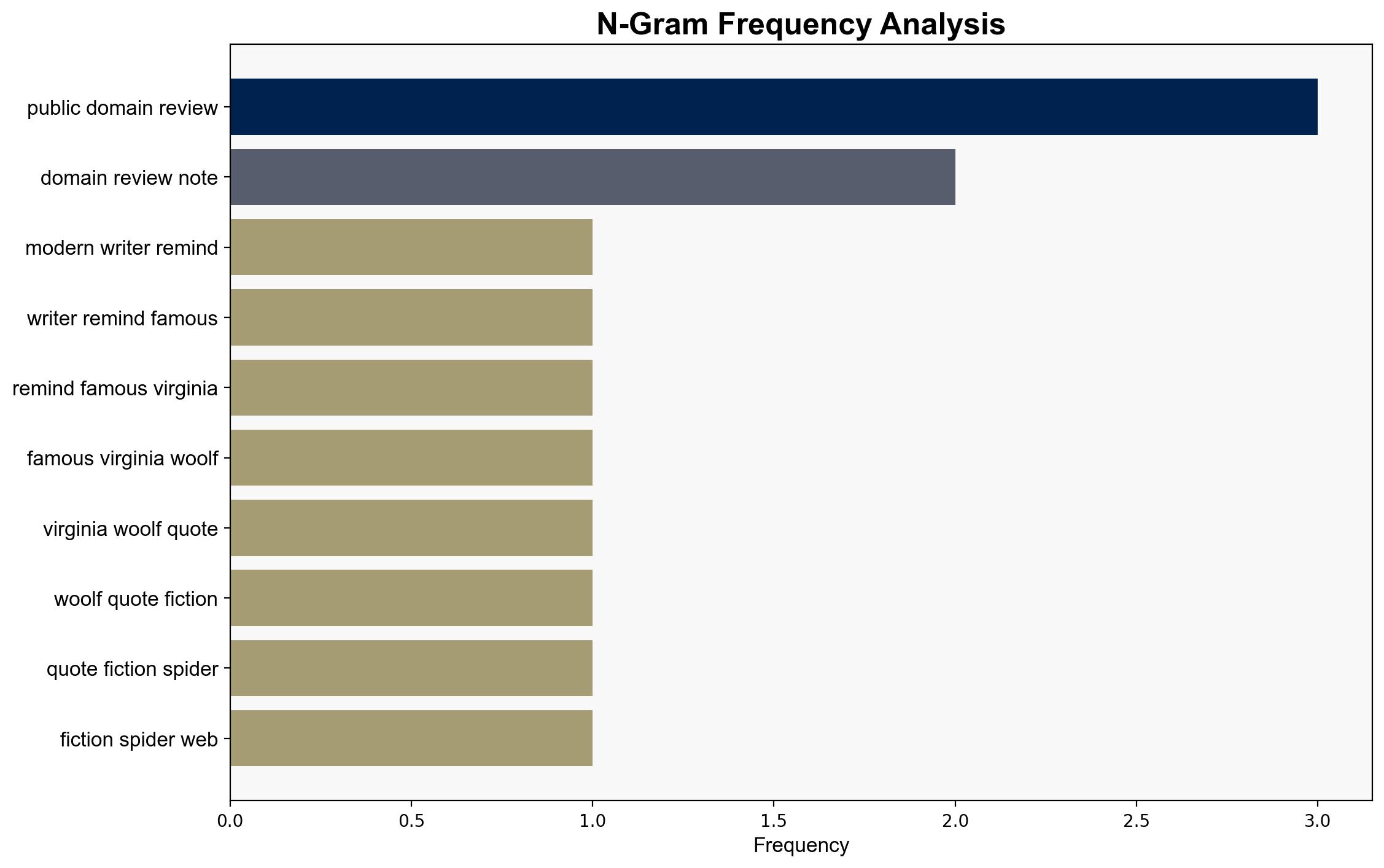The Foot-Licking Demons Other Strange Things in a 1921 Illustrated Manuscript from Iran – Openculture.com
Published on: 2025-10-03
Intelligence Report: The Foot-Licking Demons Other Strange Things in a 1921 Illustrated Manuscript from Iran – Openculture.com
1. BLUF (Bottom Line Up Front)
The analysis suggests that the 1921 illustrated manuscript from Iran, depicting demonic beings, serves as a cultural artifact reflecting historical demonological traditions and possibly allegorical commentary on societal issues. The most supported hypothesis is that the manuscript is a blend of cultural mythology and artistic expression rather than a literal or purely historical document. Confidence level: Moderate. Recommended action: Further interdisciplinary research to explore cultural and historical contexts.
2. Competing Hypotheses
Hypothesis 1: The manuscript is primarily a cultural and artistic expression, drawing on historical demonological traditions to comment on societal issues of the time.
Hypothesis 2: The manuscript is a literal historical document intended for use in occult practices or as a talismanic guide.
Using ACH 2.0, Hypothesis 1 is better supported due to the integration of whimsical and allegorical elements, as well as the presence of artistic motifs that align with known cultural storytelling practices.
3. Key Assumptions and Red Flags
Assumptions:
– The manuscript reflects broader cultural and mythological traditions rather than isolated beliefs.
– The illustrations are intended to convey allegorical or metaphorical meanings.
Red Flags:
– Lack of direct historical context or corroborating documents from the same period.
– Potential cognitive bias in interpreting the manuscript through a modern lens.
4. Implications and Strategic Risks
The manuscript’s depiction of demons and mythical beings could influence modern interpretations of historical cultural practices, potentially leading to misrepresentations. There is a risk of cultural artifacts being misused to support contemporary ideological narratives. Understanding these artifacts can provide insights into historical societal fears and values, which may inform current cultural dynamics.
5. Recommendations and Outlook
- Conduct interdisciplinary research involving historians, cultural anthropologists, and art historians to contextualize the manuscript within its historical period.
- Scenario-based projections:
- Best Case: The manuscript is recognized as a significant cultural artifact, enhancing understanding of historical Iranian culture.
- Worst Case: Misinterpretation leads to cultural or ideological conflicts.
- Most Likely: The manuscript remains a niche academic interest, contributing to broader cultural studies.
6. Key Individuals and Entities
– Ali Karjoo-Ravary
– Jorge Luis Borges (referenced for comparative analysis)
7. Thematic Tags
cultural heritage, historical analysis, mythological studies, artistic expression




